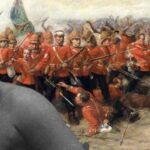Kuanzia karne ya 8 hadi 16, nyasi pana na majangwa ya Sahel yalilea baadhi ya milki kubwa zaidi za Afrika. Ghana, Mali, na Songhai zilitawala njia za msafara zilizobeba dhahabu, chumvi, pembe za ndovu, watu waliokuwa watumwa, na mawazo kati ya Afrika Magharibi, Afrika Kaskazini, na Mediterania. Miji yao Koumbi Saleh, Djenné, Timbuktu, Gao ikawa vituo vya nguvu, utajiri, na masomo. Ingawa bahati ya kisiasa ilibadilika kadiri wakati, urithi wao hudumu katika epics za mdomo, hati za maandishi, na usanifu mkubwa.
Ghana Empire (c. 800–1076 CE): Nchi ya Kwanza ya Dhahabu
Milki ya Ghana (isichanganywe na Ghana ya kisasa) ilistawi katika sehemu ya juu ya Senegali na mabonde ya mto Niger, mji mkuu wake ukiwa Koumbi Saleh. Kulingana na al-Bakri (mwaka wa 11 c.), mfalme alitawala jiji la nchi mbili: mmoja unaokaliwa na wafanyabiashara na wasomi Waislamu, mwingine na mahakama ya kifalme na wasomi wa jadi.
- Uchumi na biashara: Msafara wa Ghana ulitoza ushuru unaotembea kati ya machimbo ya dhahabu ya Bambuk na Bure na migodi ya chumvi ya Sahara ya Taghaza. Mauzo ya nje yalijumuisha dhahabu, kola, pembe za ndovu, na mateka; zilizoagizwa kutoka nje zilikuwa na chumvi, shaba, nguo, farasi, na vitabu vya Kiislamu.
- Kataa: Ikidhoofishwa na shinikizo la Almoravid, matatizo ya ndani, na kuhama kwa biashara, Ghana ilianguka mwishoni mwa karne ya 11, na kutoa nafasi kwa mamlaka zinazoinuka mashariki zaidi.
Milki ya Mali (c. 1235–c. 1500 CE): Utajiri wa Mansa Musa
Ilianzishwa na Sundiata Keita baada ya Vita vya Kirina (1235), Mali iliimarisha udhibiti juu ya mkondo wa Niger na njia za biashara zinazounganisha Afrika Magharibi na Afrika Kaskazini. Kilele chake kilikuja chini Mansa Musa (k. 1312–1337), ambaye safari yake ya kuhiji Mecca mwaka 1324 ilionyesha kiasi cha dhahabu kiasi kwamba masoko ya Cairo yaliripotiwa kuyumba.
- Miji: Timbuktu na Djenné ilistawi kama vitovu vya usomi, kuvutia wanasheria, washairi, na wanaastronomia. The Chuo Kikuu cha Sankoré ilitokeza maelfu ya hati za theolojia, sheria, tiba, na elimu ya nyota.
- Utawala: Mali ilitegemea mfumo wa tawimto, ambapo watawala wa eneo hilo walikubali mansa na kulipa ushuru wa dhahabu, mazao, au mateka.
- Kataa: Kufikia karne ya 15, mizozo ya ndani na uvamizi wa nje uliondoa utawala wa Mali, na kuweka msingi wa kuinuka kwa Songhai.
Dola ya Songhai (c. 1464–1591 BK): Urasimi wa Sahel
Iliyowekwa katikati Gao na baadaye Timbuktu, Songhai aliifunika Mali kwa ukubwa chini Askia Muhammad I (k. 1493–1528).
- Utawala na Utawala: Askia ilipanga upya Songhai katika majimbo yanayotawaliwa na maafisa walioteuliwa, ikaunda wizara za haki, kilimo na kijeshi, na kuanzisha hazina rasmi. Sheria ya Kiislamu ikawa nguzo ya utawala, ikitekelezwa na makadi (mahakimu).
- Uchumi: Chumvi kutoka Taghaza, dhahabu kutoka bonde la Niger, na watumwa kutoka ndani walikuwa bidhaa kuu nje ya nchi. Uagizaji ulijumuisha farasi wa Mediterania, nguo za Afrika Kaskazini, na vitabu vya Kiislamu.
- Kataa: Mnamo 1591, jeshi la Morocco lililokuwa na silaha za baruti lilimshinda Songhai kwenye Vita vya Tondibi, na kugawanya milki hiyo.
Gharama ya Kibinadamu: Biashara ya Utumwa katika Ukanda wa Sahara
Pamoja na dhahabu na chumvi, binadamu walikuwa bidhaa muhimu sana katika biashara ya ng'ambo ya Sahara. Kuanzia enzi ya zama za kati hadi enzi ya kisasa, mateka walitembezwa kupitia njia za jangwani hadi kwenye masoko ya Maghreb, Misri, na Mashariki ya Kati. Wengine walitumikia jeshi, wengine katika kaya au kilimo. Makadirio yanaonyesha mamia ya maelfu ya watu walihamishwa kwa karne nyingi, na kuunda upya idadi ya watu wa Saheli na tabaka za kijamii muda mrefu kabla ya biashara ya Atlantiki kuanza.
Maarifa na Uhifadhi: Hati za Timbuktu
Mapokeo ya maandishi ya Timbuktu yanasalia kuwa moja ya urithi mkuu wa Sahel. Makumi ya maelfu ya maandishi juu ya unajimu, dawa, sheria, mashairi yanapatikana katika maktaba za familia na taasisi. Miradi ya hivi majuzi ya kuweka dijiti na uhifadhi, inayoungwa mkono na walinzi wa ndani, the Makumbusho ya Hill & Maktaba ya Maandishi (HMML), UNESCO, na Aga Khan Trust, huzingatia uhifadhi, uwekaji orodha na mafunzo yanayodhibitiwa na hali ya hewa. Licha ya vitisho kutoka kwa migogoro na msimamo mkali (hasa 2012-2013), hati nyingi zilisafirishwa kwa usalama na zinaendelea kuwekwa dijiti.
Akiolojia na Ushahidi wa Nyenzo
- Uchimbaji katika Koumbi Saleh wamefichua nyumba za mawe, misikiti, na bidhaa za biashara zinazounganisha Afrika Magharibi na Afrika Kaskazini.
- Matokeo yaliyopatikana nchini Mali na Niger ni pamoja na kaure za Kichina zilizoagizwa kutoka nje, vioo vya Afrika Kaskazini, na sarafu za Kiislamu, ikisisitiza wigo wa kimataifa wa biashara ya Saheli.
- Uchimbaji wa Djenné-Djenno (ulioanzishwa miaka ya 1970 na Susan & Roderick McIntosh) ulifichua mabaki ya mijini yaliyoanzia mwaka wa 250 KK, ikionyesha mambo ya kale ya kale ya miji ya Sahelia.
Changamoto za Uhifadhi
Urithi wa Sahelian unakabiliwa na vitisho vinavyoongezeka
- Hali ya hewa: Kuongezeka kwa hali ya jangwa, kung'aa kwa chumvi, na mvua kubwa huharibu usanifu wa udongo.
- Migogoro na uporaji: Makundi yenye silaha yameharibu maeneo na kuhatarisha walinzi.
- Majibu: UNESCO na urejeshaji wa hazina ya Aga Khan Trust, huku waashi wa ndani wakidumisha misikiti kwa plasta ya kitamaduni ya banco. Usimamizi wa jamii ni muhimu lakini haufadhiliwi kidogo.
Kutembelea Maeneo ya Urithi wa Sahel
- Timbuktu na Gao (Mali): Ufikiaji kwa sasa umezuiwa kutokana na hatari za usalama; angalia ushauri wa serikali.
- Djenne (Mali): Salama zaidi kwa wageni, unaojulikana zaidi kwa Msikiti wake Mkuu (UNESCO). Soko la kila jumatatu linabaki kuwa shwari.
- Senegal na Mauritania: Viingilio salama zaidi vya Sahel heritage, pamoja na miji ya msafara na makumbusho zinazoweza kufikiwa.
- Vidokezo vya kusafiri: Msimu mzuri zaidi ni miezi ya kiangazi (Nov–Feb). Tumia miongozo ya ndani inayoaminika; vibali vinahitajika kwa upigaji picha katika baadhi ya tovuti za UNESCO.
Kwa Nini Falme Hizi Bado Ni Muhimu
Himaya za Ghana, Mali, na Songhai sio kumbukumbu za mbali tu ni misingi ya historia ya Kiafrika na kimataifa. Utajiri wao katika uchumi wa Ulaya wa zama za kati uliokuwa na umbo la dhahabu, usomi wao wa Kiislamu uliunganisha Afrika Magharibi na vituo vya kujifunza kutoka Cairo hadi Baghdad, na ubunifu wao wa kitamaduni unaendelea kujirudia katika muziki, lugha, na usanifu kote Sahel. Hadithi hizi pia zinapinga dhana potofu zilizopitwa na wakati. Muda mrefu kabla ya ukoloni, Waafrika walijenga mataifa magumu yenye mifumo ya kodi, majeshi, mitandao ya biashara, na vyuo vikuu. Maandishi ya Timbuktu yanayohusu sheria, dawa, unajimu, na ushairi yanatukumbusha kwamba Afrika haikuwa “bara la giza,” bali sehemu ya ulimwengu wa kiakili uliochangamka.
Urithi huu pia ni dhaifu. Mabadiliko ya hali ya hewa, kuenea kwa jangwa, ukosefu wa utulivu wa kisiasa, na uporaji unatishia mabaki ya falme hizi, kutoka kwa misikiti ya udongo inayobomoka hadi maktaba za hati zilizo hatarini kutoweka. Kuzihifadhi sio tu kuhifadhi makaburi bali ni kulinda miunganisho hai kati ya zamani na sasa, ili jamii za wenyeji wanufaike na utalii, usomi na fahari ya kitamaduni.
Kwa wasafiri wa leo, wanafunzi, na raia wa kimataifa, kujifunza kuhusu falme hizi kunamaanisha kujihusisha na historia iliyounda Afrika na dunia nzima. Milki ya dhahabu ya Sahel inatukumbusha kwamba uthabiti, ubunifu, na maarifa yanaweza kustawi hata katika mazingira magumu ya masomo ambayo yanahisi kuwa ya dharura katika wakati wetu wenyewe wa dhiki ya hali ya hewa na kutokuwa na uhakika wa ulimwengu.
Vyanzo Vilivyopendekezwa
- Hati za Kituo cha Urithi wa Dunia wa UNESCO (Djenné, Timbuktu, Gao)
- Paul E. Lovejoy, Biashara ya Utumwa katika nchi za Trans-Sahara (1983, iliyorekebishwa ed. 2011)
- John Hunwick na Alida Jay Boye, Hazina Zilizofichwa za Timbuktu (2008)
- Nehemia Levtzion na JFP Hopkins (wahariri). Corpus of Early Arabic Sources for West Historia ya Kiafrika (1981)
- Ralph Austen, Afrika Trans-Sahara katika Historia ya Dunia (2010)
- Encyclopaedia Britannica (viingizo: Ghana Empire, Mali Empire, Songhai Empire)
Machapisho yanayohusiana
-
Urithi wa Malkia Nzinga wa Ndongo na Matamba
Gundua hadithi ya Malkia Nzinga wa Ndongo na Matamba malkia shujaa wa Kiafrika wa karne ya 17…
-
Vita vya Isandlwana na Vita vya Anglo-Zulu vya 1879
Saa kumi na moja asubuhi ya tarehe 22 Januari 1879, kikosi cha maskauti wa Uingereza…
-
Maktaba Kubwa za Afrika - Zamani na Sasa
Kuanzia hazina za maandishi ya zamani hadi vituo vya kisasa vya kidijitali, maktaba za Kiafrika zimekuwa suluhu za…


